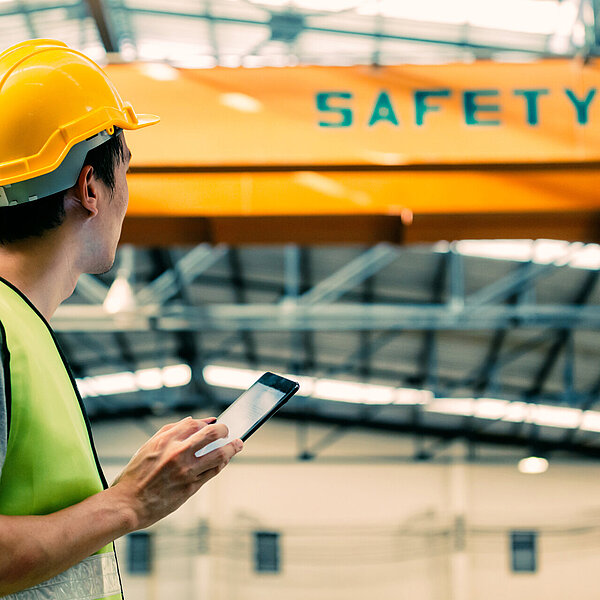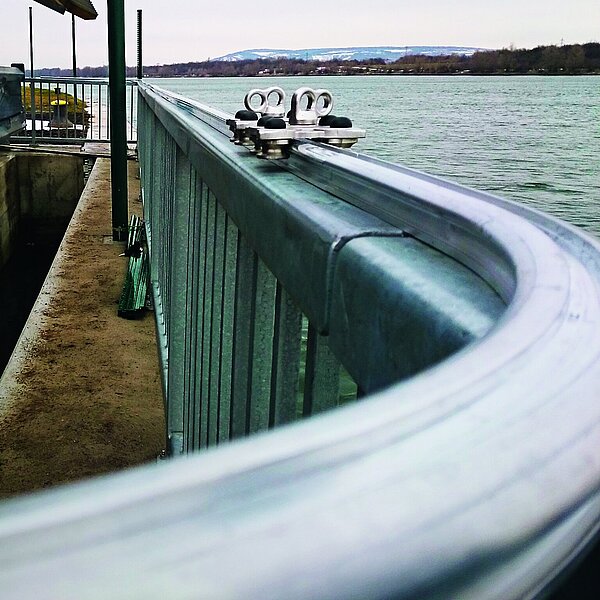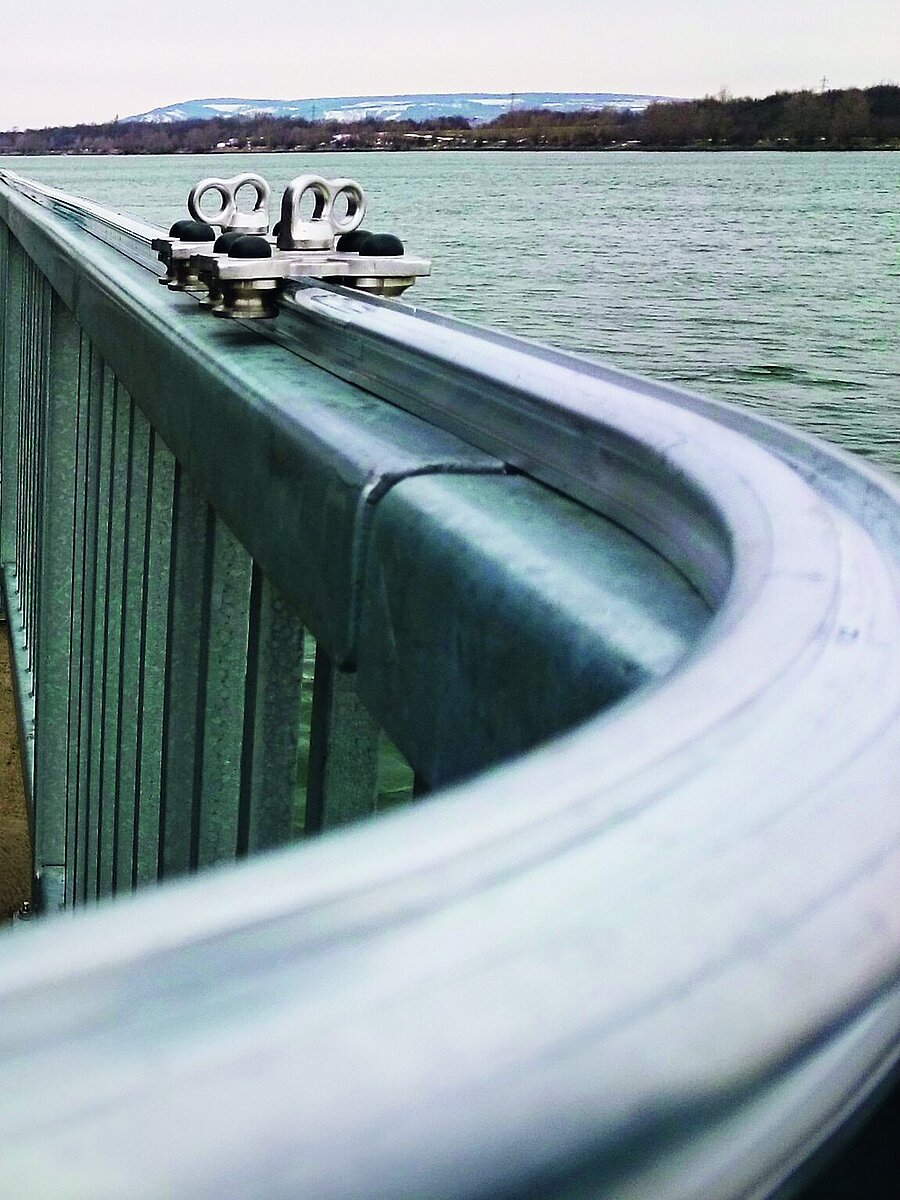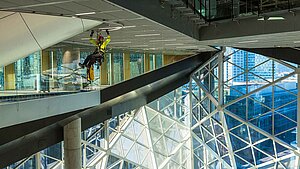By means of the STOP principle, the employer recognises risks in advance, and eliminates or minimises them by means of the appropriate safety solution. It is the employees who apply the measures of the STOP principle. The STOP principle is often also known as the STOP sequence, priorities, or hierarchy.
What matters here is that the employees can understand and apply the concept. This is the only way to avoid workplace accidents which may have serious consequences. Specifically where there is a high fall risk, the STOP principle is extended by “C” for conduct-related measures, and thus becomes the STOPC principle.
What does the “STOP” mean in the STOP principle?
The letters represent the following:
- Substitution
- Technical protective measures
- Organisational protective measures
- Personal protective measures
Extension where there is a high fall risk:
- Conduct-related protective measures
Here the “S” represents SUBSTITUTION, i.e. the elimination of the risk. For servicing and maintenance measures on facades, PV installations on roofs, or for example on dam walls, this must be achieved by means of suitable, certified fall protection. This is the only way to prevent serious accidents.
If elimination of the risk is not possible, then the TOP-principle is to be applied. This guideline consists of TECHNICAL,ORGANISATIONAL and PERSONAL industrial safety measures.
In addition, all persons involved must know about and be appropriately trained in all safety-relevant aspects of their workplace.
The STOP principle in detail
In many countries, the STOP principle is also anchored in law (e.g. in § 7 of the Act on Protection of Workers (ASchG) in Austria), and implementation is mandatory. The Austrian Federal Ministry for Social Affairs, Health, Care, and Consumer Protection has published its own publication in which the principles of risk prevention are described exactly. Here are the major points:
Substitutions
So-called substitutions, i.e. the use of an alternative to a danger source, could for example include the use of neutral cleaning agents instead of their caustic or poisonous equivalents.
Technical protective measures
If substitutions are not possible, then technical protective measures must be defined. Here the focus is on the consideration of how to keep employees away from the source of danger or how to minimise the risk – for example by installing guardrail systems at roof edges. These prevent access to this danger area, and thereby prevent falls.
Organisational protective measures
If technical measures to prevent accidents cannot be implemented, then potential organisational measures are deployed, in order to minimise as much as possible the danger to the affected workers. For example, this could be achieved by separating pedestrian and forklift routes, or else by restricting the number of people in the respective work area. The instruction that only specially trained personnel may access a danger area also comes under the category of organisational measures. If, for whatever reason, these measures cannot be implemented, then personal protective measures must be specified.
Personal protective measures
These could, for example, be personal protective equipment (anti-fall PPE). However, personal solutions are mostly to be implemented in addition to the technical and/or organisational measures. In addition to anti-fall PPE, these solutions include wearing a helmet, or the correct conduct in the respective danger situations.
Preventing falls by means of additional measures - “C” as in conduct-related
For facades, roofs, or industrial operations with large machinery and equipment, falling represents the greatest risk of all. In these cases, the extension of the STOP principle by the “C” as in CONDUCT-RELATED measures is important and completely logical!
Primarily this is a case of appropriate training of all employees in all safety-relevant aspects. The objective is that, before taking up their activity, not only are the workers in a position to assess the risk correctly, but also that they can correctly apply protective measures and safety solutions.
For this, regular further training programmes and repeat training are necessary. The principal purpose of these training sessions is to teach the employees the workplace conduct appropriate to the situation. They will in any case already bring the technical know-how with them. In addition, they must know the respective fall protection system and also the anti-fall PPE in detail, so that they can use them appropriately and always attach themselves correctly.
This is the only way that falls having severe health consequences for those affected, as well as potential legal consequences for the employer, can be prevented effectively. Remember that the best protection is useless if in practice it is used incorrectly or not at all.







